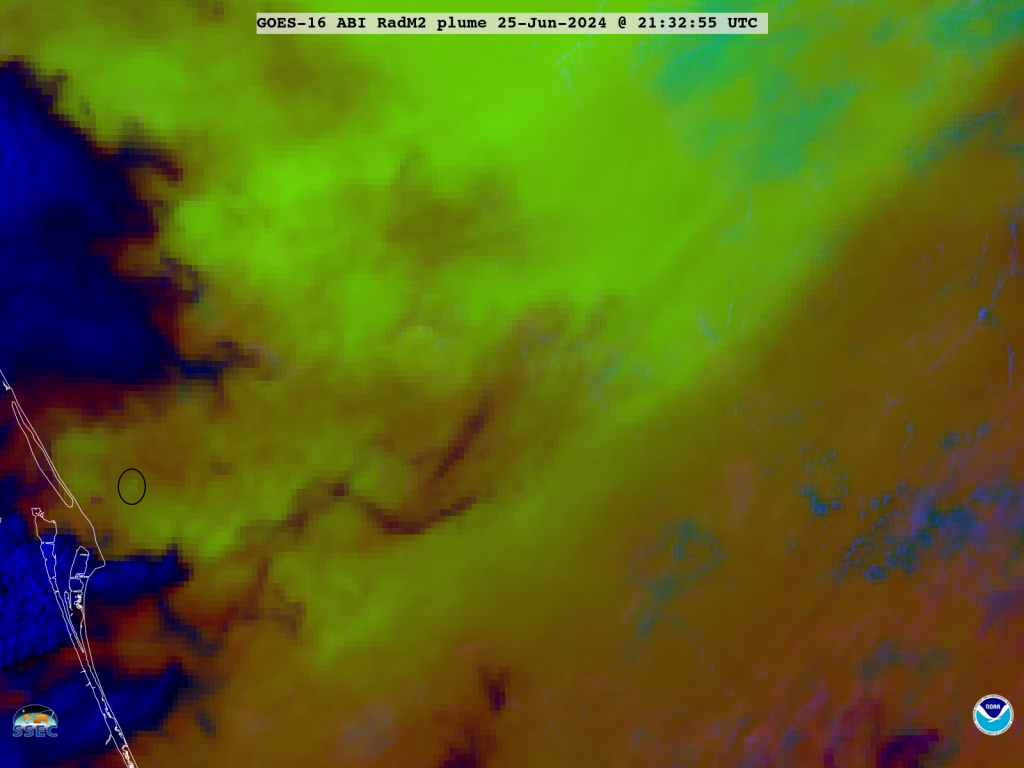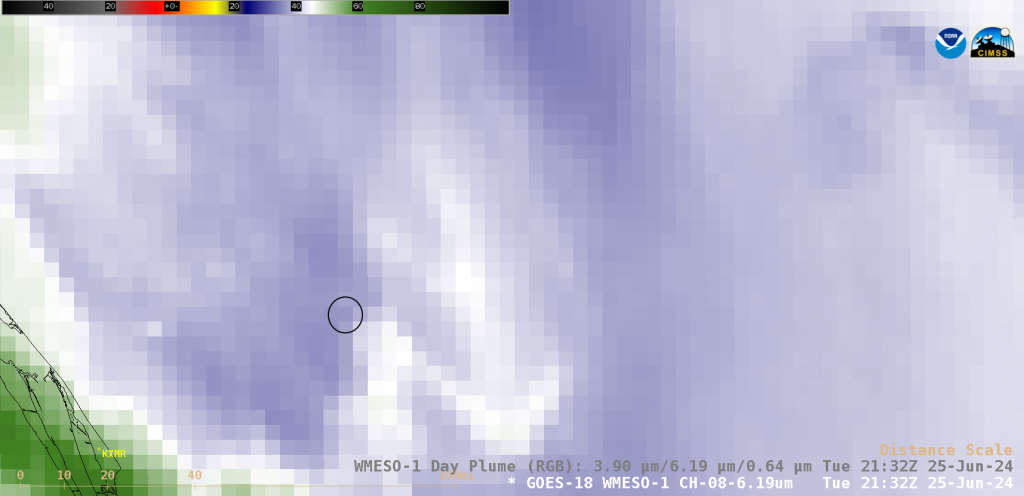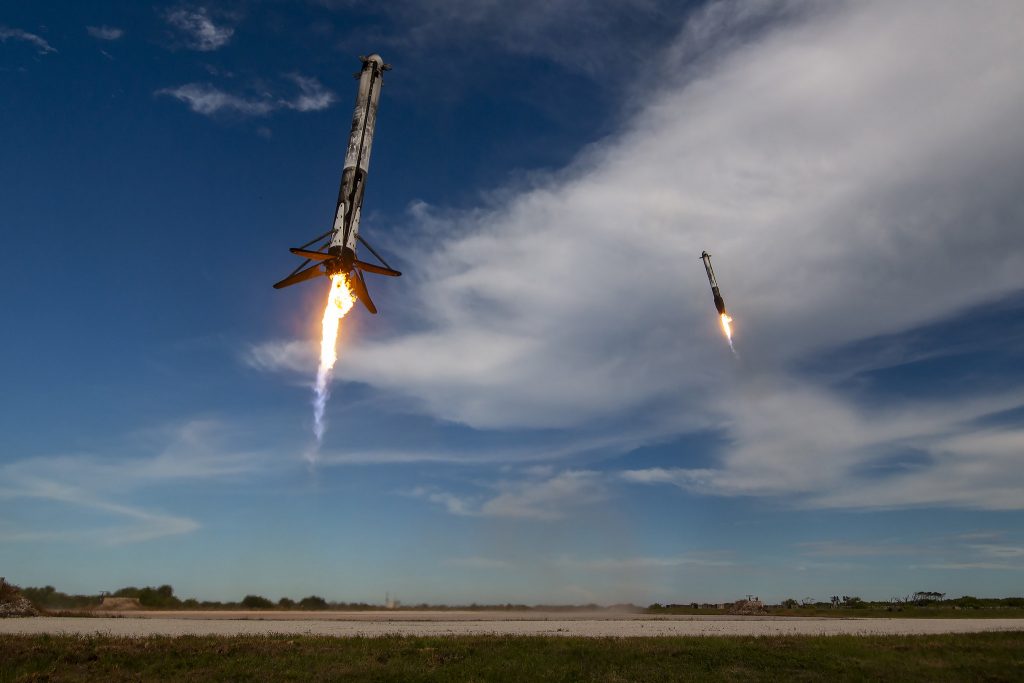Most Subtle Rocket Booster Re-Entry Signal Ever?
The GOES-U rocket launch on SpaceX Falcon Heavy provided an opportunity for GOES-East (16) and -West (18) to monitor the launch and booster re-entries. Both the operational GOES were taking special (research) ABI meso-scale sectors of the launch, with GOES-16 providing 1-min imagery and GOES-18 30-sec (both sectors). (More on how to submit an ABI meso research request.) The launch itself has a much stronger and longer signal in ABI imagery than the smaller boosters making re-entry.
A previous CIMSS Satellite Blog shows the GOES satellite signatures of the GOES-U launch, from both GOES-16 and GOES-18.
GOES-East
The meso-scale sector from GOES-16 offered images every minute over Florida.
Above is a short loop of the upper-level “water vapor” band on the ABI. Note the warming at approximately 21:33 UTC. The white pixels to the southwest of the circle is a cloud associated with the GOES-R rocket launch.
Another option to combine three of the ABI spectral bands is via the “rocket plume” RGB that during the day uses the 3.9 um “fire” band, the 6.2 um water vapor band and “red” visible band.

GOES-West
The meso-scale sector from GOES-18 offered images every 30 seconds over Florida, albeit at a relatively large view angle. This parallax isn’t an error, just a difference in viewing. This is why the rocket appears farther east when viewed from GOES-West. More on parallax using a webapp.

All 16 bands from GOES-18 ABI.
Landing

H/T
Thanks to the large cast who built and launched GOES-U! The GOES ABI data was accessed via the UW/SSEC Data Services. McIDAS-X, geo2grid and AWIPS software was used to generate the images. More UW/CIMSS Satellite Blogs associated with rocket signatures.

